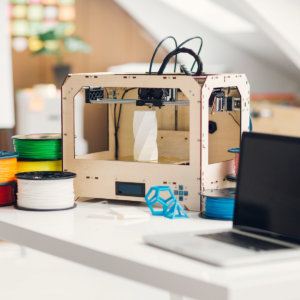The Revolution Will Be Customized (and Recycled and Solar-Powered)
Michigan Tech University’s Lab in Open Sustainability Technology has gone the extra mile in making 3D printing technology ultra-sustainable.
Topics
Leading Sustainable Organizations
My previous post about distributed 3D printing as a foundational technology that can bring the circular economy into reality prompted quite a bit of conversation. There were lots of questions about the feasibility and economics of the idea — so to dig deeper, I reached out to Joshua Pearce, director of Michigan Tech University’s Lab in Open Sustainability Technology.
Motivated by addressing the world’s sustainability challenges, Dr. Pearce’s original research focused on driving down the cost of solar cells. But while developing a solar-powered laptop, he found the cost of producing a custom plastic computer casing prohibitive. A search for cheaper alternatives led to him to open-source 3D printers and, in his words, “It just kind of took over my research.”
His work has since expanded to the sustainability opportunities that 3D printing offers for addressing development challenges in emerging economies, as well as its transformational potential in advanced economies like the United States and Europe. As he says, “In the end, everybody is going to be manufacturing the same way — the least expensive — which happens to be distributed manufacturing with 3D printing.”
Pearce discovered the economics of 3D printing when his lab needed high-end scientific instruments that sold for thousands of dollars from specialty manufacturers. Using an inexpensive 3D printer, his lab was able to fabricate expensive items like syringe pumps for a fraction of their retail cost. “Combining open-source electronics with 3D printing,” says Pearce, “it’s very easy to show economics for high-end products.”
Currently, the economics are still there, but are less overwhelming with simple objects like shower-curtain rings that can be spit off high-volume assembly lines in low-wage countries. Of course, those products are cheap largely because the negative environmental and human externalities associated with production and disposal go unpriced. Still, the financial trend is clear, as printing them yourself still costs less than buying them.


Comment (1)
Sarah Boisvert